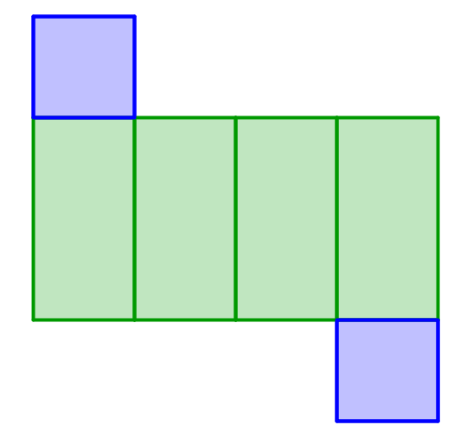Planning tool
Year levels
Strands
Expected level of development
Australian Curriculum Mathematics V9: AC9M7SP01
Numeracy Progression: Positioning and locating: P5
At this level, students demonstrate understanding of objects in two dimensions (2D). Students can draw various shapes in different ways, such as drawing informally on blank paper, on grid paper, or in an isometric representation. Discuss the reasons behind the advantages and disadvantages of different representations of the same shapes or different shapes and demonstrate how to draw or represent the different faces of a 3D object or 2D shape.
Students may be supported using dynamic geometric software to make comparisons and mathematically investigate different representations of shapes in two dimensions. Investigate an online mapping platform, such as Google Maps, and ask students to locate their house and consider it from different viewpoints: satellite imagery, street map and street view.
Use real objects to investigate shapes further; for example, ask students to investigate an empty milk carton or cereal box and deconstruct it. Ask questions: can you put it back together again? Is the base sufficient area to make this object stable?
Teaching and learning summary:
- Construct objects from different 2D representations.
- Recognise and name the net of various prisms and pyramids.
- Represent 2D shapes such as photographs, sketches and images created by digital technologies.
- Discuss the advantages and disadvantages of different representations of shapes.
- Identify the shape and relative position of each face of a solid to determine the net of the solid.
- Explore 3D objects from different perspectives.
- Draw 3D objects from different perspectives.
- Make and connect models of 3D objects and describe key features.

Students:
- construct objects from different two-dimensional representations
- recognise the net of various prisms and pyramids
- identify advantages and disadvantages of different representations of shapes
- name different prisms and pyramids
- draw three-dimensional objects from different perspectives.
Some students may:
- require ample experiences in creating and deconstructing three-dimensional (3D) objects.
- not be able to visualise 3D shapes, or hidden faces when observing 2D perspective drawings.
- be unable to describe the properties of a shape or solid, and merely point out the obvious features visible to them – namely, the faces, vertices and edges.
The Learning from home activities are designed to be used flexibly by teachers, parents and carers, as well as the students themselves. They can be used in a number of ways including to consolidate and extend learning done at school or for home schooling.
Learning intention
We are learning to create 2D nets from a 3D shape.
Why are we learning about this?
This topic allows you to explore, create and understand the relationship between the 3D world to their 2D representations.
What to do
- Makes towers of Lego or other cubes (up to four high) and arrange them on a 5 × 5 grid.
- Draw views of the towers from different perspectives (top, left, right, front, back).
- From the drawings, try to reproduce the towers on another grid.
Success criteria
I can move between 2D to 3D representations of the same object, and back again.
Please note: This site contains links to websites not controlled by the Australian Government or ESA. More information here.
Teaching strategies
A collection of evidence-based teaching strategies applicable to this topic. Note we have not included an exhaustive list and acknowledge that some strategies such as differentiation apply to all topics. The selected teaching strategies are suggested as particularly relevant, however you may decide to include other strategies as well.
-

Concrete, Representational, Abstract (CRA)
The CRA model is a three-phased approach where students move from concrete or virtual manipulatives, to making visual representations and on to using symbolic notation.
Go to resource -

Explicit teaching
Explicit teaching is about making the learning intentions and success criteria clear, with the teacher using examples and working though problems, setting relevant learning tasks and checking student understanding and providing feedback.
Go to resource -

Mathematics investigation
By giving students meaningful problems to solve they are engaged and can apply their learning, thereby deepening their understanding.
Go to resource -

Collaborative learning
For group work to be effective students need to be taught explicitly how to work together in different settings, such as pairs or larger groups, and they need to practise these skills.
Go to resource
Teaching resources
A range of resources to support you to build your student's understanding of these concepts, their skills and procedures. The resources incorporate a variety of teaching strategies.
-

Practical numbers: Part 1
In this lesson, students explore standardised measuring systems.
Go to resource -

2D to 3D: Working with shapes and representations
In this unit of work students are asked to create their own representations of two-dimensional shapes and three-dimensional objects. The resource includes lesson plans, PowerPoint slides and other resources.
Go to resource -

3D Drawing
This resource contains an article on the different ways to draw 3D objects in 2D, and some practice exercises.
Go to resource -

Connect 3D objects
This activity challenges students to accurately reproduce what they see and to interpret 2D representations of 3D objects.
Go to resource -

Exploring nets of geometric solids
In this activity students can watch as objects are ‘unwrapped’ to reveal their nets.
Go to resource -

Isometric drawing tool
This tool allows you to draw three-dimensional objects on an isometric grid. The objects can the be rotated to view them in different perspectives.
Go to resource